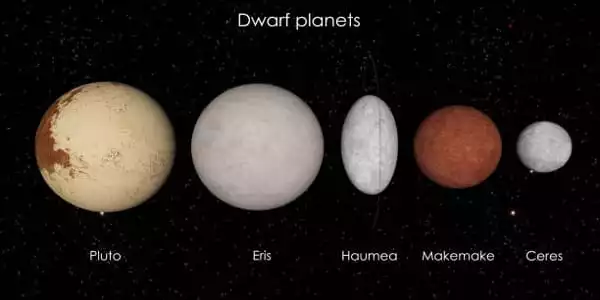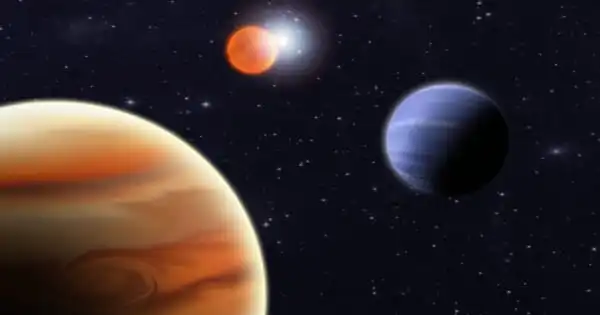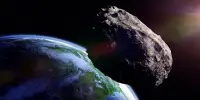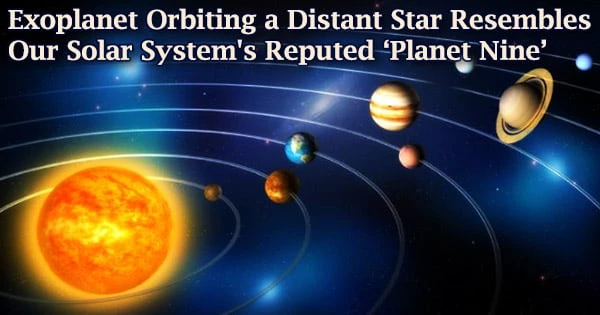What exactly is a Dwarf Planet?
A dwarf planet, according to the International Astronomical Union, is a celestial entity that orbits the sun, has enough mass to assume a roughly spherical form, has not cleared the neighborhood around its orbit, and is not a moon.
The term “planet” was derived from ancient Greek words that meant “wandering star.” That makes sense since, unlike stars, which appear solid and unmoving to the human eye, people have been watching planets move position in the night sky for thousands of years. The ancients discovered five planets in this manner: Mercury, Venus, Mars, Jupiter, and Saturn. Using telescopes, astronomers discovered Uranus in 1781, Neptune in 1846, and Pluto in 1930.
Solar system leftovers
I’m a space scientist with a keen interest in astronomy and the exploration of the solar system. I obtained my Ph.D. in physics in 1994, just as astronomers began to discover more and more objects beyond Neptune, in the Kuiper belt. That’s a location in space that houses the solar system’s “leftovers,” notably small icy bodies.
Three of the frozen bodies, Eris, Haumea, and Makemake, were discovered in the early to mid-2000s. They appeared to be massive enough to be planets; all of them are around the same size as Pluto.
Dwarf planets are not the same as Earth. They are, as the name says, significantly smaller. The greatest dwarfs, Pluto and Eris, are less than one-fifth the size of the Earth. They also have less bulk.
Astronomers then surmised that there were likely many more of these icy bodies in the Kuiper belt. They began to wonder: How many planets might we end up identifying in our solar system? Twenty? Thirty? A hundred? More?
Dwarf planet defined
After significant debate, the International Astronomical Union proposed a revised definition of a planet in 2006. The phrase “dwarf planet” was used for the first time. According to the IAU: A planet must directly orbit the sun. It must also be large enough to have a physical shape that is round or spherical. Furthermore, the planet must “clean its neighborhood.” That means that, aside from any moons it may have, the planet’s orbit cannot be shared with other objects of equal size. A dwarf planet is now defined as an object that meets just the first two criteria but not the third.

Pluto is demoted
As a result, Pluto has lost its planet status and is now categorized as a dwarf planet. It failed the final checkpoint because other cold Kuiper belt bodies are in its orbit. The decision, albeit controversial, is still being discussed by scientists today.
At the same time that Pluto was demoted, another object in the solar system was elevated. Ceres, previously classed as an asteroid, is now categorized as a dwarf planet. Ceres is not in the Kuiper belt; instead, it orbits between Mars and Jupiter in the main asteroid belt. Pluto, Ceres, Eris, Haumea, and Makemake raise the total number of minor planets in our solar system to five. However, that list is bound to grow. Already, hundreds of candidates, nearly all in the Kuiper belt, potentially satisfy the criteria to be a dwarf planet.
About the dwarf planets
Dwarf planets are not the same as Earth. They are, as the name says, significantly smaller. The greatest dwarfs, Pluto and Eris, are less than one-fifth the size of the Earth. They also have less bulk. Earth, for example, has approximately 6,400 times the mass of Ceres. Comparing two killer whales to a guinea pig is absurd. Dwarf worlds are also chilly. Pluto has an average temperature of roughly -400 degrees Fahrenheit (minus 240 Celsius).
Could life exist on a dwarf planet?
Life requires three things: liquid water, an energy source, and organic molecules (molecules containing carbon). An huge ocean of liquid water may exist more than 100 miles (161 kilometers) beneath Pluto’s surface; this may also be true for other Kuiper belt worlds. Ceres also has subterranean water, maybe relics of an ancient global ocean.
Organic molecules, which are abundant across our solar system, have been discovered on Ceres and Pluto. The one thing that all of the dwarf planets need is a source of energy.
Sunlight will not work, especially for Kuiper belt dwarfs, because they are simply too far away from the sun. The light must travel more than 2.7 billion miles to reach the belt (4.4 billion km). When the sunlight reaches these far worlds, it is too faint to considerably heat any of them. And all of the dwarf planets are too small to contain the residual heat from the solar system’s birth.
Scientists have discovered life on Earth in the most hostile environments imaginable, including the ocean’s depths, miles deep in the soil, and even within an active volcano. Never say never when it comes to life in our solar system.
















